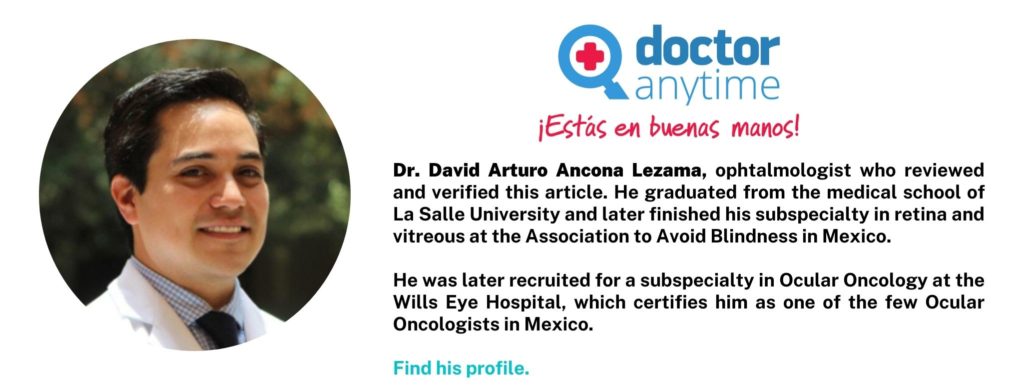Autor: Doctoranytime
More and more people have to wear some type of lens in order to see well and lead a relatively normal life. Among the most notorious ocular affectations are short-sightedness and astigmatism. These two problems directly affect the patient’s vision but each one has specific characteristics that make them different. An ophthalmologist is the doctor who has the ability to diagnose and treat both conditions. In this way, the patient can be aware of what he has and what is the best course of treatment.
Definition of short-sightedness
A person has short-sightedness when he is not able to distinguish objects that are far away clearly. In most cases, this condition affects both eyes and is generated because the eye is longer than the average length. Because of this, the image is formed in front of the retina rather than directly on it. Genetics are the most common cause of short-sightedness. This means that if you have family members who have needed to wear glasses to see clearly, it is very likely that you will also develop it at some point in your life.
Although genetics is a common cause, diseases such as diabetes can cause a person to have a blurry sight. Another disease that can be the prelude to this is cataracts. In this case, the ophthalmologist must do several studies to determine which disease should be treated first. There are several treatment routes for short-sightedness. The most common is to use prescription glasses. However, correction surgery is one of the most requested options by patients. The second option is not for all patients, since it is required that they be of legal age, have a stable graduation and that their eyes are in good condition to withstand the surgery.
What is astigmatism?
When light is focused on various points on the retina, a condition called astigmatism occurs. An anomaly in the cornea’s curvature produces this, causing the patient to see any object in a blurry way, regardless of its location.
The most common symptoms of this condition are seeing double, having a high sensitivity to light and having to squint to see a person or object correctly. Unlike the short-sightedness that usually appears when the patient is a child, astigmatism does not have a specific age of onset. In fact, several specialists mention that a person can begin to develop it at any age. However, its degree remains more stable compared to short-sightedness.
If you suspect that you may suffer from any of these diseases, you should see an ophthalmologist. This doctor will do a complete eye exam to determine if you will need to start wearing glasses or if you will need surgery. Remember that abnormal vision can undermine your independence and ability to lead an uncomplicated life.

We thank the collaboration of Dr. David Arturo Ancona Lezama, ophthalmologist. He graduated from La Salle University School of Medicine and later completed his subspecialty in retina and vitreous at the Association to Avoid Blindness in Mexico. He was later recruited for a subspecialty in Ocular Oncology at Wills Eye Hospital, certifying him as one of the few Ocular Oncologists in Mexico.
References:


